Taboo, transgression, transcendence and other provocative stories
Published 31 October 2025 by Chrysa Chouliara
The Taboo-Transgression-Transcendence (TTT) in Art & Science international conference was holding its 6th edition at Kino Šiška in Ljubljana, Slovenia, on September 9-13. Organised for 10 years by the Department of Audio and Visual Arts at Ionian University (Corfu, Greece), the event is also member of the Feral Labs Network and the Rewilding Cultures cooperation program, co-funded by the European Union. Chrysa Chouliara, the 2025 Makery summer chronicler-in-residency for the Rewilding Cultures program, shares her impressions of this provocative event.
The Higgs boson didn’t go down in history as the world’s biggest entity, nor the simplest one. Instead, it earned its fame through its complexity. Sometimes, obscure fragments—when united—can shift our world more powerfully than one great, golden shitstorm. In today’s political climate, with the rise of raging fascism and mass ecocide, it’s no surprise that conferences like TTT exist. To paraphrase Newton: where there’s action, there’s an equal and opposite reaction.

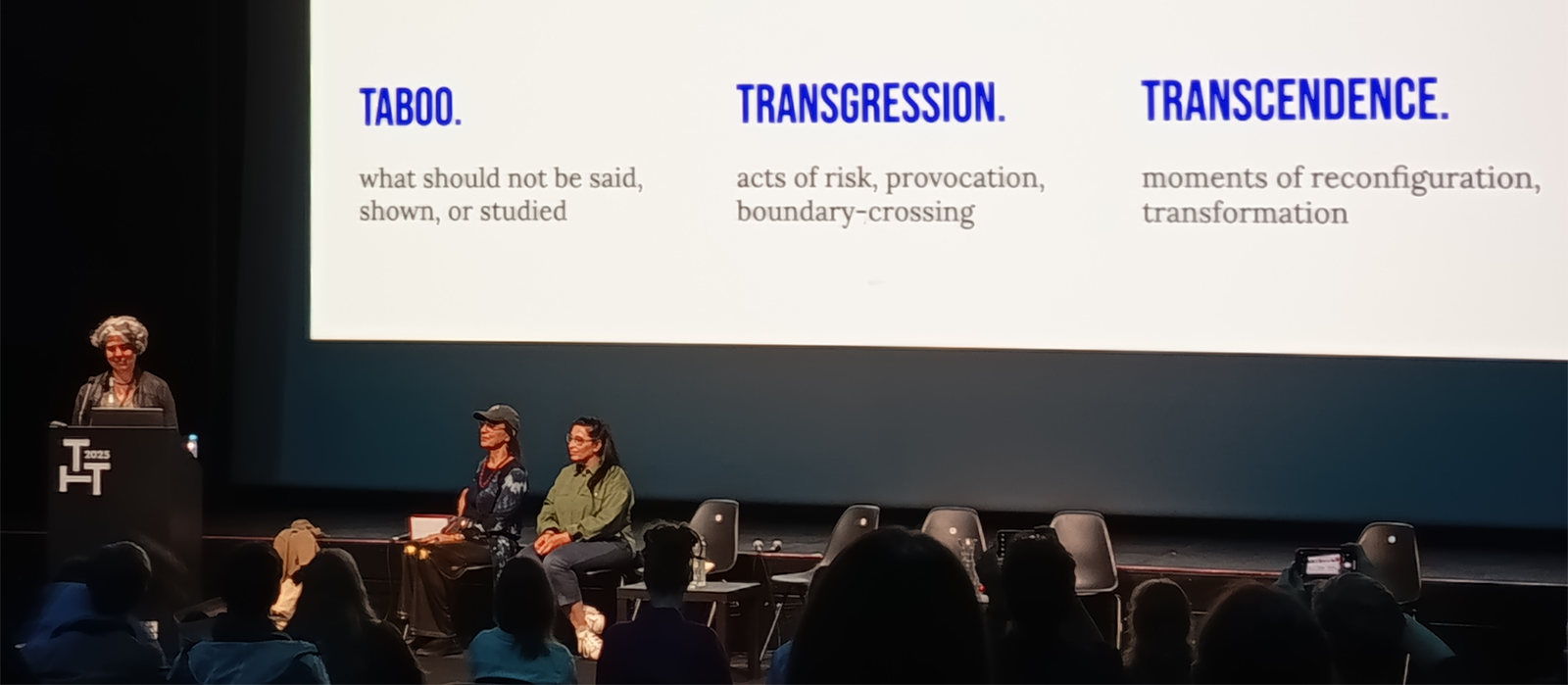
It’s hard to write about TTT—it’s more of a holistic experience than a conference in its format. With approximately 170 speakers from over 30 countries focusing on questions about the nature of the forbidden and the aesthetics of liminality, and on opening spaces for creative transformation in the merging of science and art, it was humanly impossible to attend everything. Personally, I wish I had the capacity to revisit it all with a Time Machine since I’ve never encountered such an intricate curation of exquisite subjects.
At first, the format of TTT seems straightforward. In each panel, every speaker has 15 minutes to present, followed by a closing discussion with all participants. But here comes the twist: in most conferences, people are grouped together for having similar approaches to a topic. It doesn’t take long to realize that the genius of TTT’s curation lies in the contrasting perspectives and methodological approaches of its speakers. Each panel is a carpet exquisitely woven in opposing colors, firing our neurons in all directions.
Death is not the end: From vermicomposting to eco-grief
For over eight years, Andrew Gryf Paterson has practiced vermicomposting at home, documenting his interactions with his “clew” — a community of Eisenia fetida composting worms — through playful photo collages shared on a popular blogging platform. Under the Scots-familiar title Me an ma Wormies #1, these posts record a symbiotic relationship: he provides organic waste, and the worms and their microbial collaborators transform it into nutrient-rich humus, or “black gold.”

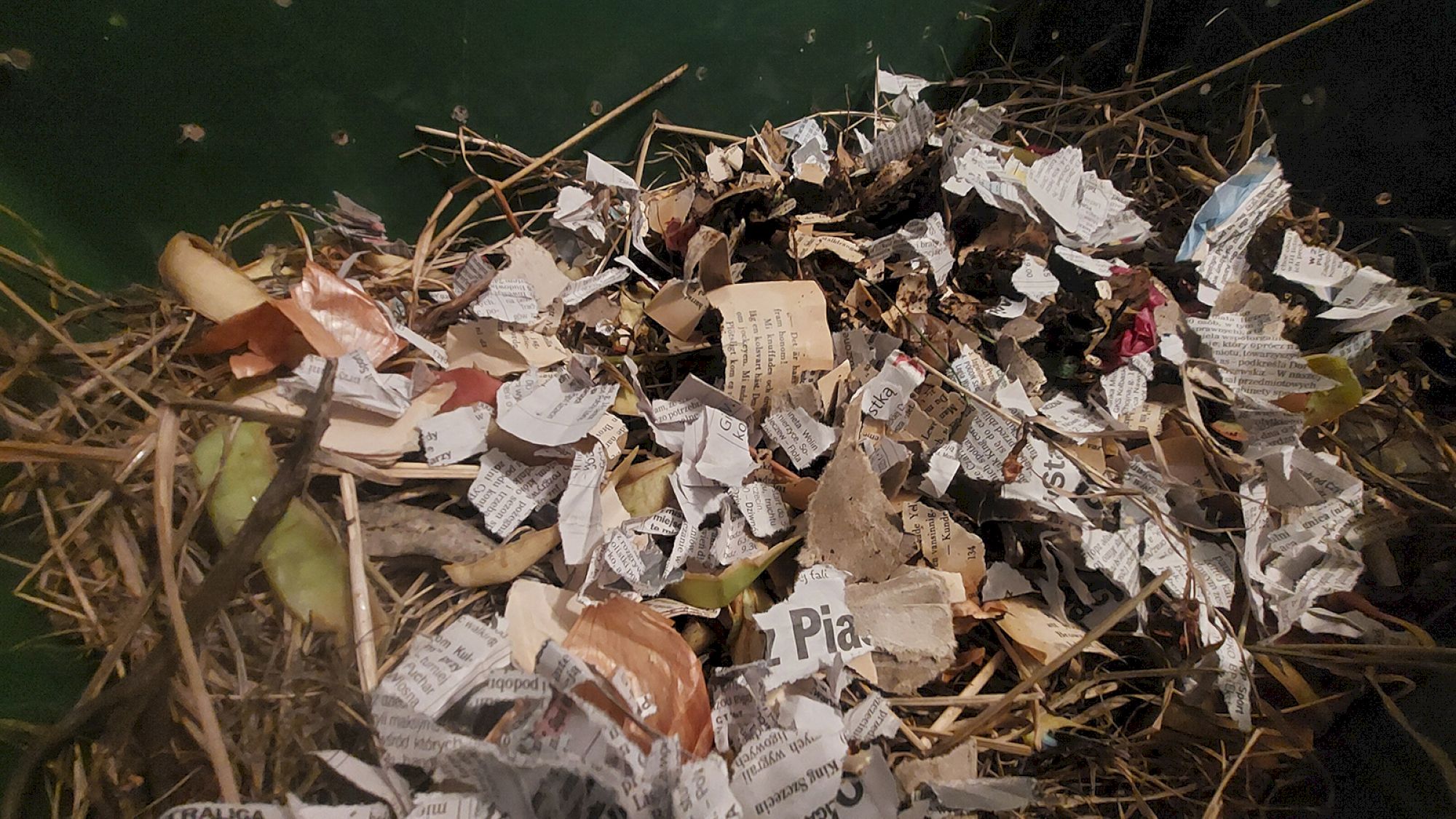
Passionate to his goal he brought his ‘clew’ composting worms all the way from Helsinki, Finland. The worms were fed among other typical delicacies such as vege scraps and coffee grinds: torn up papers from old falling-apart books. Paterson has been interested in exploring ways to inspire youth to embrace vermicomposting by turning into an engaging, educational experience through interactive visual media rather than static imagery, with the hope of creating a prototype ‘visual-jockey’ (VJ) system that visually reveals the hidden processes that take place within the compost bins. Natural sunlight exposure is lethal to worms, in a variety of ways. Earthworms don’t have eyes, they have receptor cells that are sensitive to light and touch instead making it exceedingly challenging to monitor their movements. Using different light frequencies like red and infra encouraged us to get our hands dirty and involved.
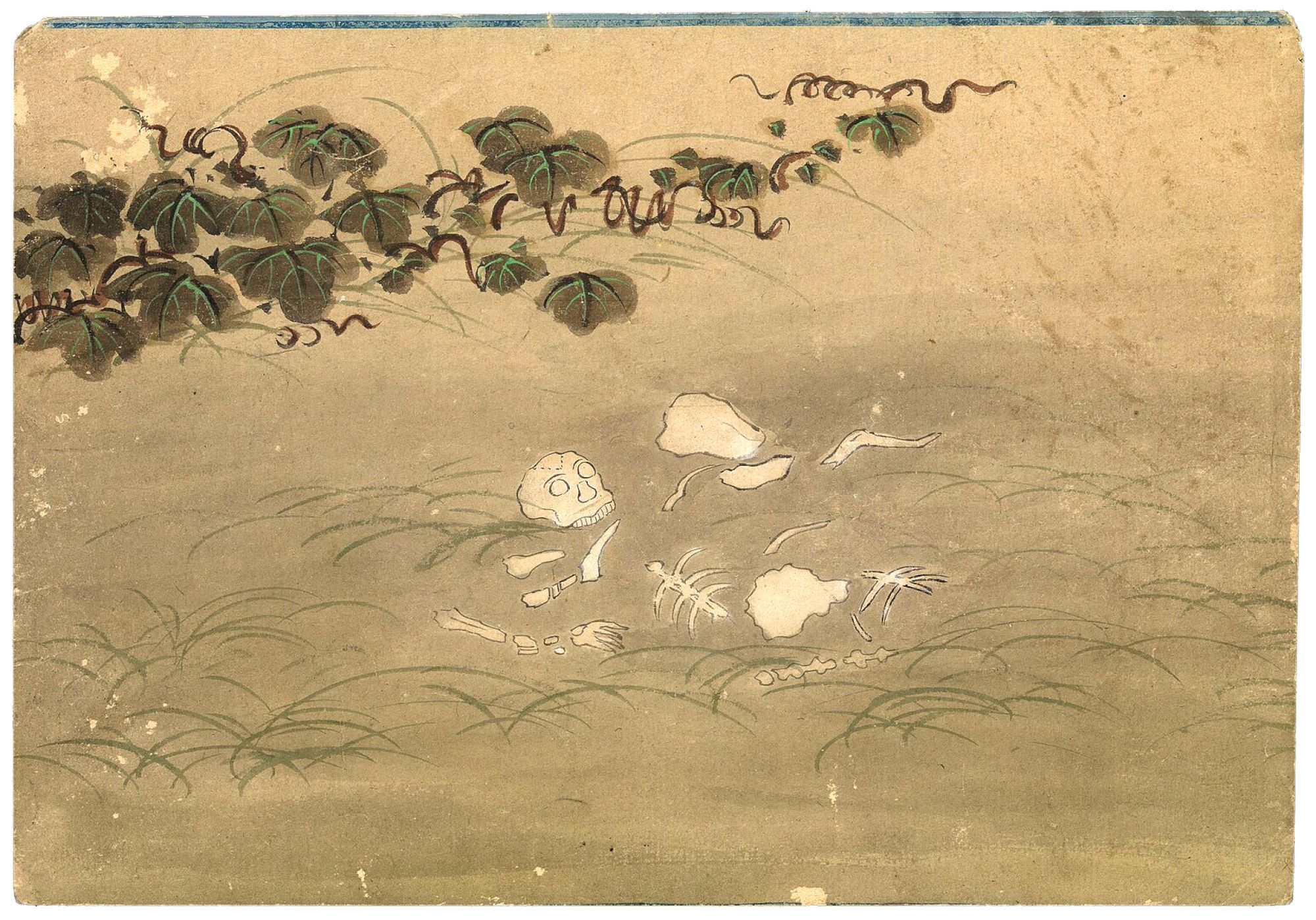
Staying in a decomposing mode, François-Joseph Lapointe—a biologist and bioartist—draws inspiration from molecular biology and genetics. In Buddhist practice, contemplating death is integral to meditation, and many cultures perform sky burials, leaving bodies exposed to nature. This pragmatic view of mortality inspired kusôzu, a Japanese art form (13th–19th century) depicting, in nine stages, the graphic decay of a corpse, usually female. This tradition, blending religion and aesthetics, finds a parallel in forensic studies of the thanatobiome—the microbial communities involved in the five stages of human decomposition: fresh, bloat, active decay, advanced decay, and dry/skeletonized.
Both artistic and scientific approaches explore the body post-mortem, reflecting the cyclical nature of life and death. While kusôzu visually narrates bodily decay, the thanatobiome unravels the microbial successions driving it, revealing thanatomorphosis—the gradual transformation of a human body into carrion, skeleton, and dust. Beyond mere representation, Lapointe’s hybrid art-science practice proposes new ways of depicting decomposition, bridging ancient aesthetic traditions with contemporary microbial forensics.
“Death is a node.
It is a point of implosion, where past, present, and future collapse – a presence/absence of that which dies.
And perhaps, a collapse for those who remain.
A key concern in Western philosophy and culture.
A point of reference. A term eternally re-appropriated by discourse.
Subject to both pornification and tabooisation at the same time..
Marietta Radomska
After months spent in various cancer wards as a patient, death, grief, and the taboo surrounding mortality touch me in ways perhaps different from most. Still, I had no idea who Marietta Radomska was when I found myself sweating and panting my way up and down two floors before finally entering her lecture — intrigued only by the title. I wasn’t disappointed. The concept of eco-grief gave form to feelings I hadn’t yet found words for.
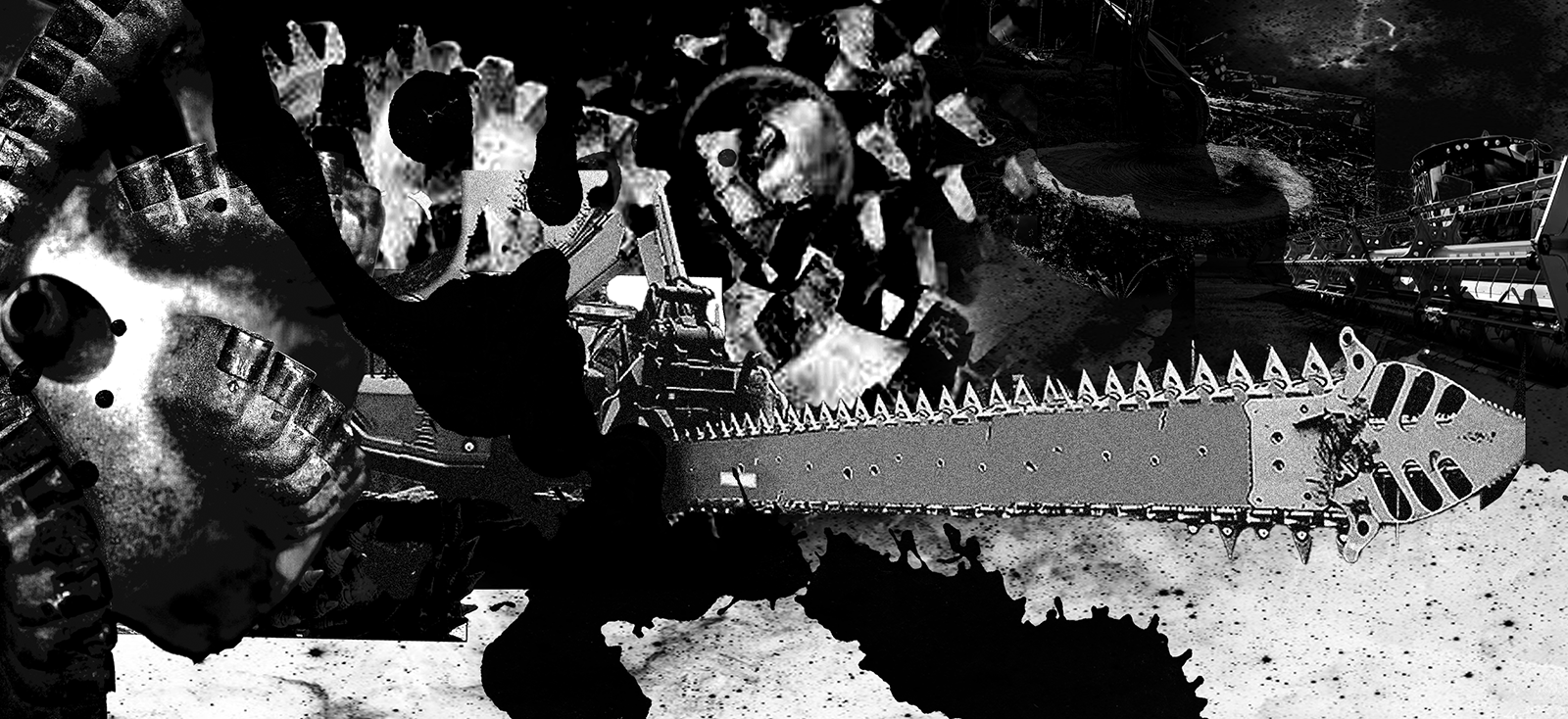
“A sense of grief becomes increasingly tangible in contexts where climate change and planetary environmental destruction transform certain habitats into unliveable spaces and induce socio-economic inequalities and shared more-than-human vulnerabilities. Although grief and bereavement linked to the loss of a human or of that which has already passed are societally accepted or even expected, the mourning of nonhuman death and ecological loss has a rather different status. It is often described as ‘disenfranchised grief’ (Doka 1989): not openly accepted or acknowledged in society. Simultaneously, death and loss can presently be understood as important environmental concerns. In many ways, they are entwined with mechanisms of environmental violence and the myriad of its manifestations.”
Extract from “Mourning the More-Than-Human: Somatechnics of Environmental Violence, Ethical Imaginaries, and Arts of Eco-Grief” by Marietta Radomska, Somatechnics, Volume 14, Issue 2, August 2024.
Untaxonomizible taxonomies: “Too much order is a sign of danger”
It’s Thursday morning and most of us in the Komuna hall at Kino Šiška are crying. The reason behind this is daniela brill estrada’s “The in-taxonomizables”: a lecture/performance about indisciplined matter. Her words cut razor sharp like the teeth of the shark she so much admires.
“It is about all that can’t be taxonomized, categorized, measured, it is about shapeshifting bodies and existences that resist binary and closed systems of categorizations which deny life and matter in its purely free, complex, weird, messy, queer state.”

Estada draws inspiration from her personal journey of rebellion against fixed forms or taxonomies, drawing on the absurdity of gendered hierarchies, the violence inherent in social, colonial, and scientific classifications, and the deep wisdom of in-taxonomizable creatures like sharks, rocks, and salt dykes questioning the stability humans cling to, framing herself as a trajectory of information in constant transformation, celebrating the fractal, the contradictory, the in-disciplined, the distracted, the weird.
The next lecture is about “Queer Mermaids in Contemporary Art” by Jessica Ullrich. In Hans Christian Andersen the mermaid conforms to human norms and therefore suffers. Moments after her metamorphosis: “your tail will divide and shrink until it becomes what the people on earth call a pair of shapely legs. But it will hurt; it will feel as if a sharp sword slashed through you.” In her transformation she loses her voice and identity. But long before Andersen and Disney turned mermaids into icons, merpeople existed in Black and Indigenous cosmologies. The Western image of the mermaid reflects colonial ideas of beauty and femininity, but the figure itself has radical potential. As a hybrid between woman and fish, she challenges binaries between nature and culture, human and nonhuman. Artists who imagine queer, old, Black, disabled, or transgender mermaids use this figure to question racism, sexism, ableism, and human supremacy.
Aphrodisiacs, witches and multitudes
“What if humans could cure climate change by simply drinking a special potion? A potion that would create an equal playing field between all entities, human and other-than-human? And now imagine that this special potion is made by a new species of bioengineered oysters. These new and improved cyborg oysters secrete a fluid that when ingested turns that ecstatic feeling of aphrodisia in humans into a new state of sentience – an “aquadisia”!


“Aquadisia” is a playful performance and speculative design project by Stephanie Rothenberg that plays on the myth of the oyster as an aphrodisiac to reimagine a more mutually symbiotic relationship between humans and other-than-humans. It merges this with the aesthetics of telemarketing, where pseudo-scientific commercials promise everything from eternal youth to effortless weight loss.

In the times of massive ecocide and unapologetic femicides there’s no easy way out. Self-exploration becomes an act of defiance forging a witch coven preaching consensual pleasure in the performance on/scenity by le ambigue.
on/scenity is a celebration of synthetic desires, a provocative ceremony that interweaves sex, technology, magic and biology.
It is a ritual of reclaiming the body and desire.
It embodies the rebellion of Hecate’s witches, the biohacking of the future, and the sexual magic of the sacred obscene. 🌑🩸
Our cult challenges the boundaries between technology and flesh, between impurity and power, between eroticism and revolution – it reflects her earthly, lunar, and chthonic aspects.
Following the tradition of ALMA Futura’s previous works/fields of research committed to female healthcare and its innovation, combining biotechnology and interactive wearables and the Bruixes Lab – nomadic lab of biohacking, sextech and witchcraft rituals the performance celebrates body autonomy & sovereignty: Our bodies are ours to explore, experiment and hack.
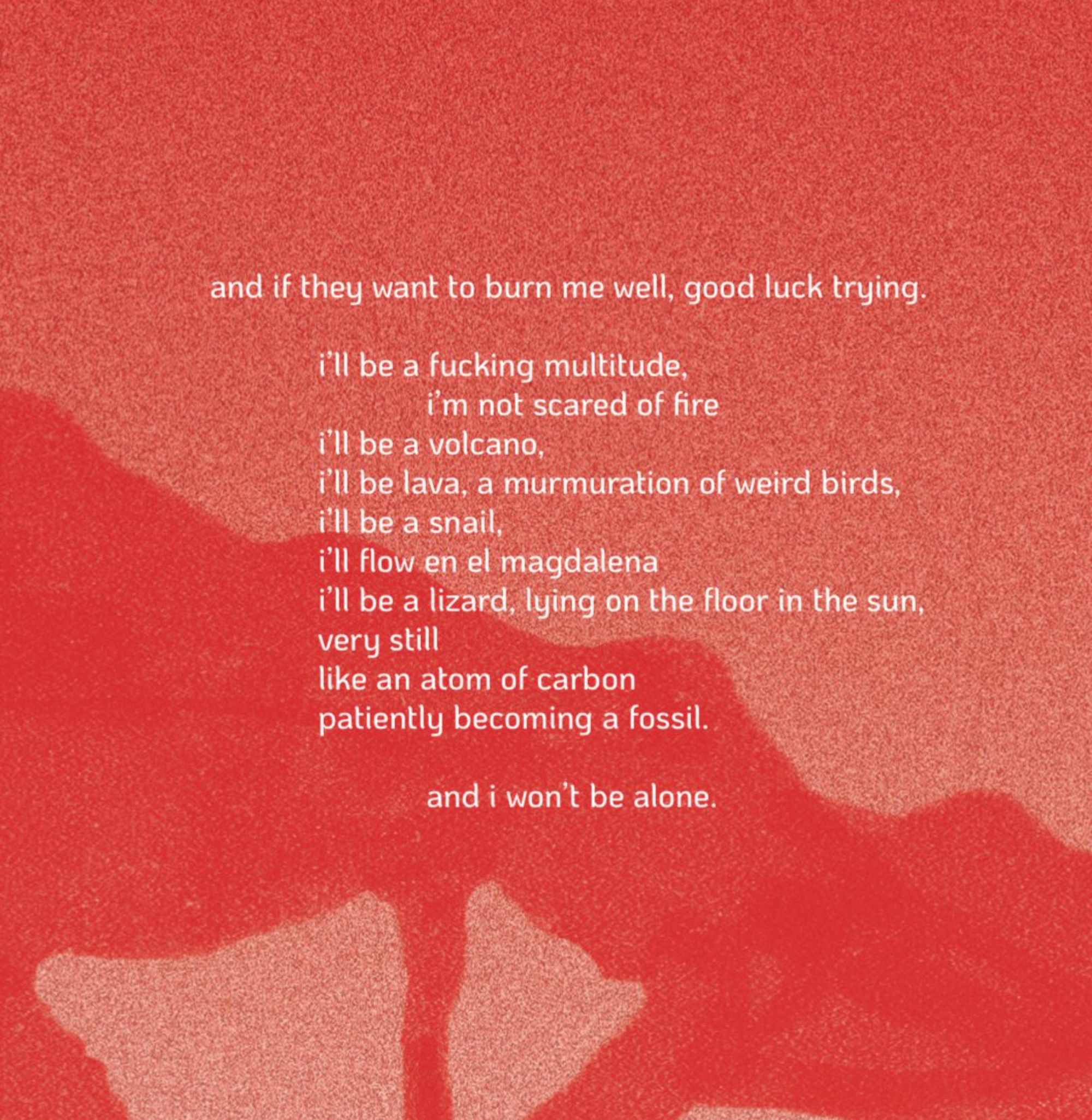
Fighting against precarious funding, burnout, and uneven access, the success of TTT lies in its ability to create safe yet provocative spaces. Each subject was approached in a transdisciplinary way, breaking away from the format of a traditional conference. Every topic found its place and was treated with respect. In short, TTT is an inclusive mosaic of contrasting experiences, where a global network of diverse practitioners builds long-term collaborations, solidarity, and resilience.
Parallel events
Outside the lecture halls, a multitude of parallel events unfolded across the colorful city of Ljubljana. But time, being the bitch that it is, allowed me to attend only two.
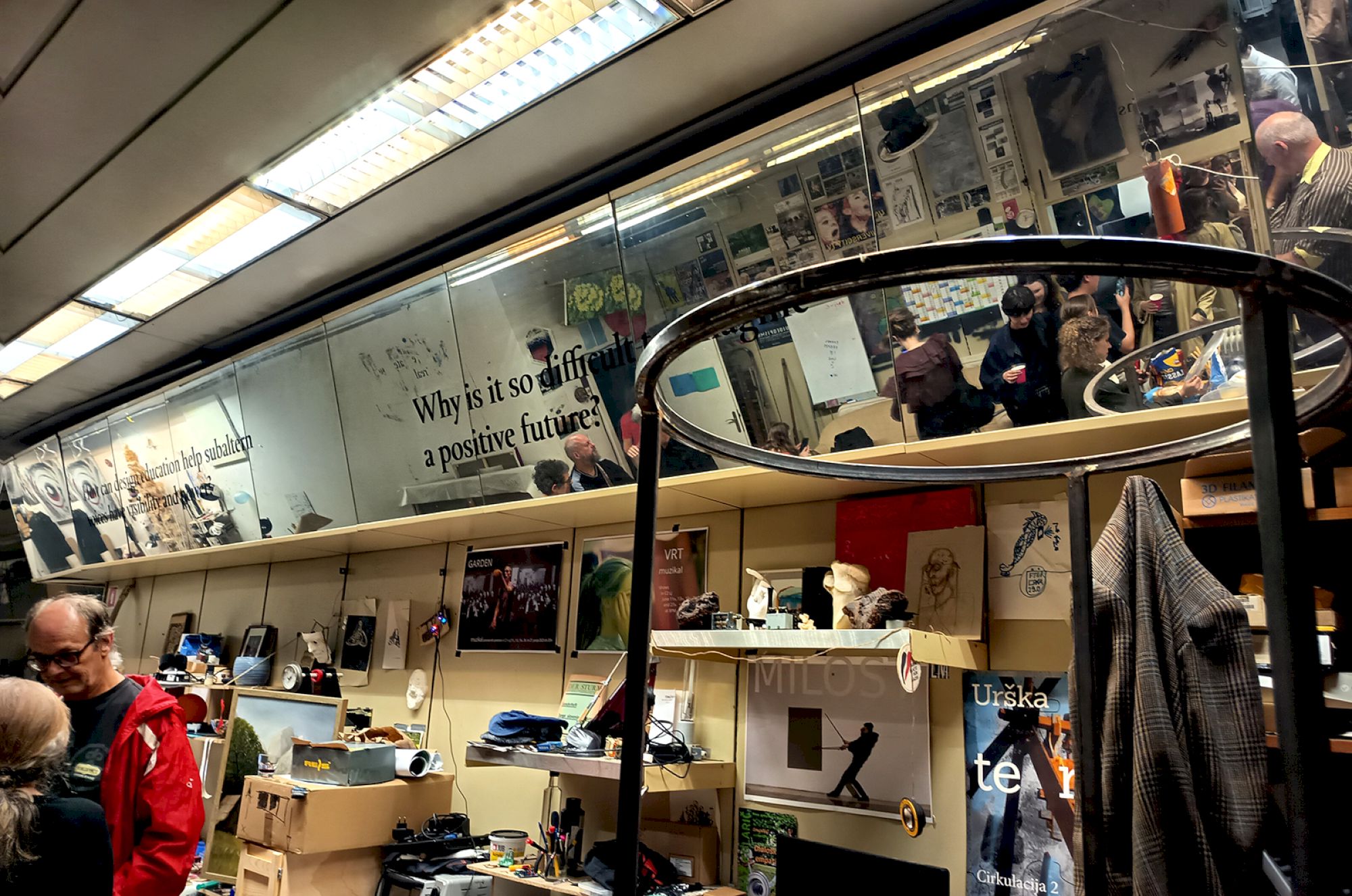
Beneath the central bus station, in a passage frequented by drug users, lies Cirkulacija 2. Literally an underground association, Cirkulacija 2 is an artist-led initiative based in Ljubljana, with roots reaching back to 2007. Functioning as a local hub for independent artistic production, it fosters interdisciplinary practices grounded in mutual support, shared methodologies, and social cohesion. We are there for the exhibition Spatiality, Echoes of Movement by Bass Jansson — and, of course, to taste Slug Burgers.
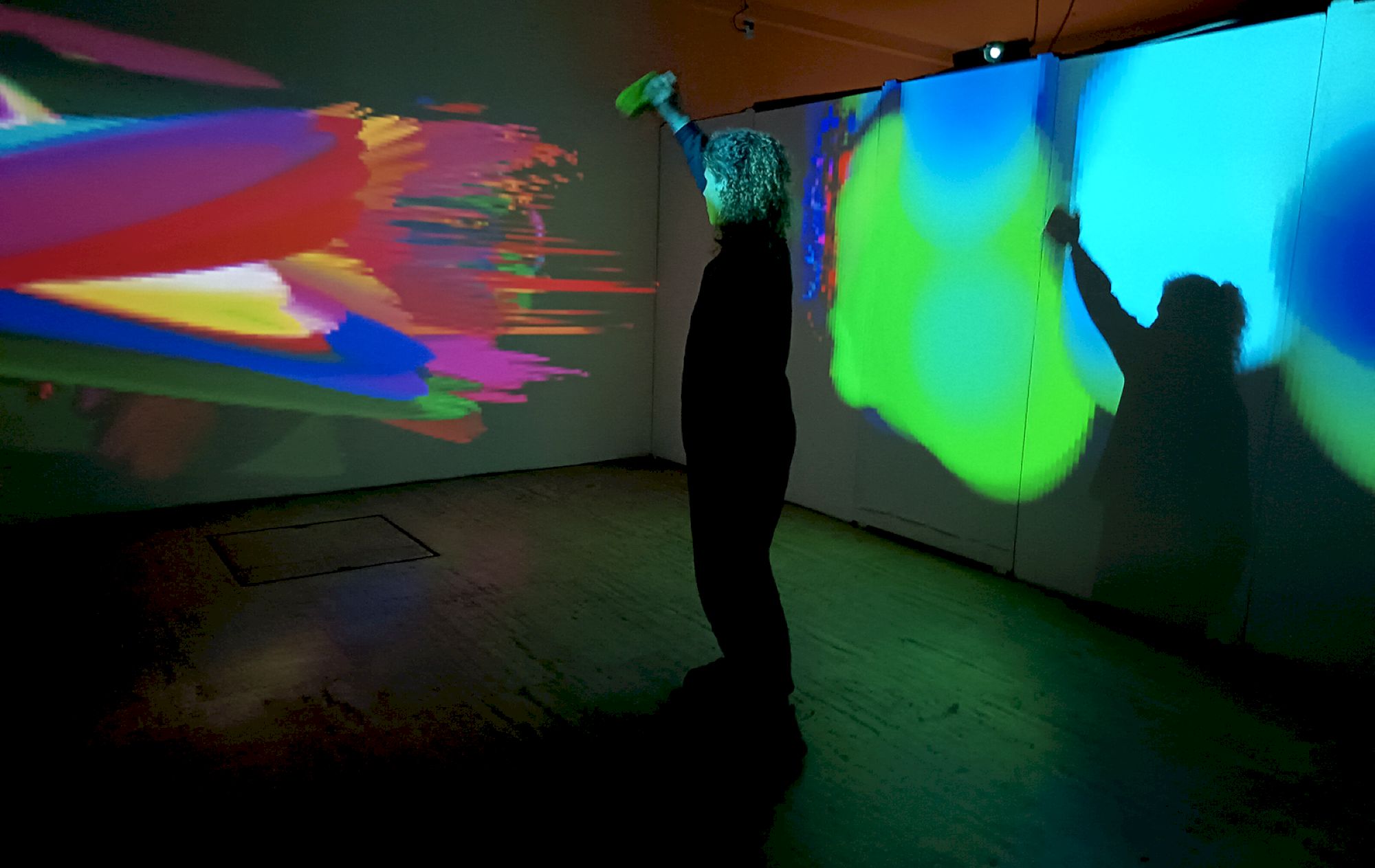

Yes you heard right… Marc Dusseiller, nomadic researcher and workshopologist, and artist Dominik Mahnič, presented a participatory performance — a provocative exploration of BioArt confronted with an essential question: How can there be authentic biological art without embracing the reality of killing? The work builds on more than a decade of “Urban Hunting” expeditions, inviting participants to reflect on the blurred boundaries between creation and destruction, life and decay — a recurring motif throughout TTT’s investigations into the ethics and aesthetics of the living.
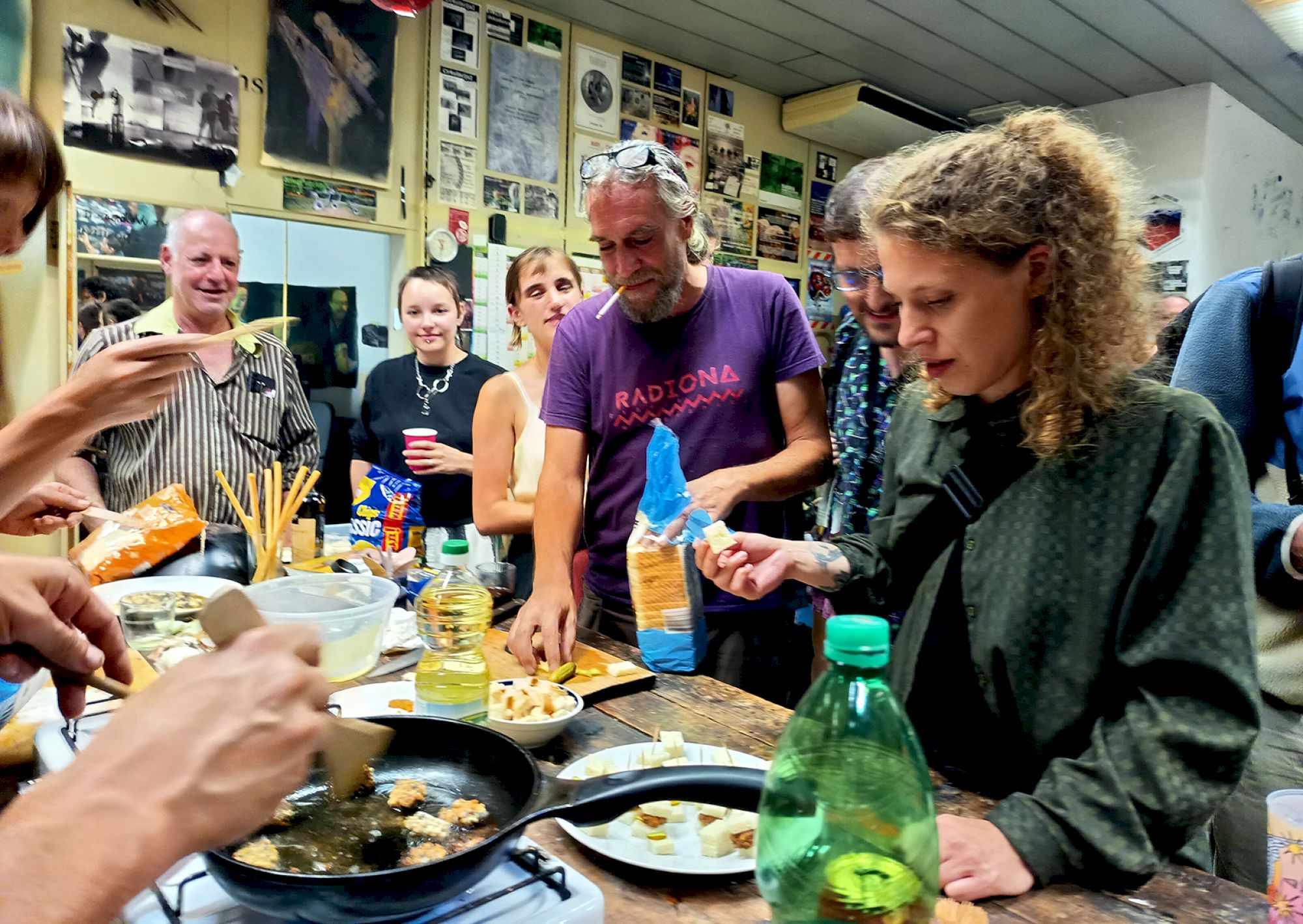
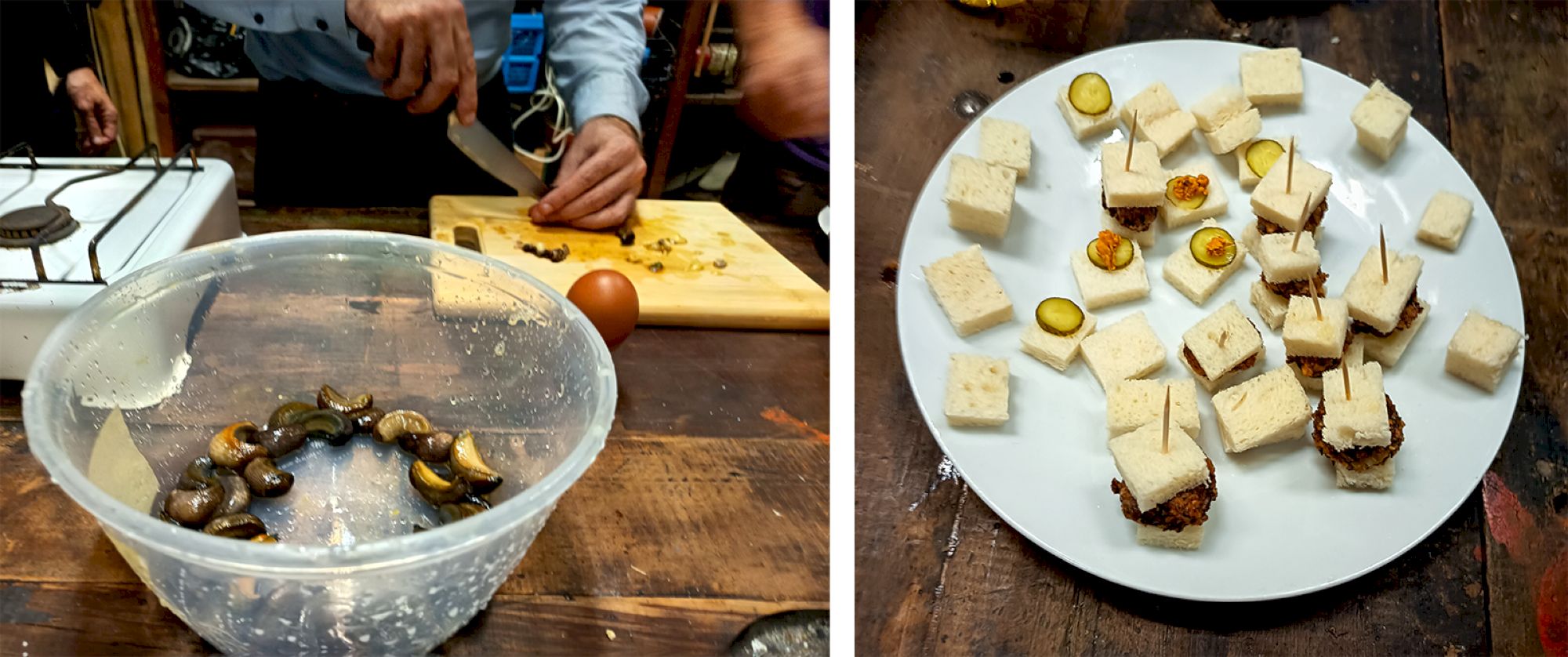
The next stop is Kapelica Gallery, where curators developed Forensic Performativity, a presentation method that includes forensic remnants, video and photo documentation of previously curated performance projects, and the performative experience of personal storytelling within the intimate setting of an exhibition set there succeeding to catch the unrepeatability of extreme performance as a medium through its remains.

In the same building, there are many ateliers. Among them is the studio of one of my favorite artists, VTOL / Dmitry Morozov, whose kinetic sculptures I’ve admired for years. Visiting his studio, somehow accidentally, felt like another Easter egg of TTT. Something that barely consoles me for missing the lecture of Maja Smekar on her problems with the Slovenian far-right (you can contribute to the defense fund at Art Kinship, a platform endorsed by Makery, editor’s note).


More on TTT2025 Ljubljana
More on Rewilding Cultures and the Feral Labs Network
Read our interview with Maja Smrekar.
